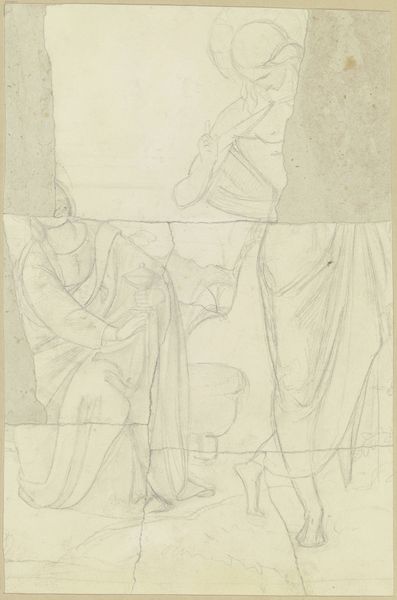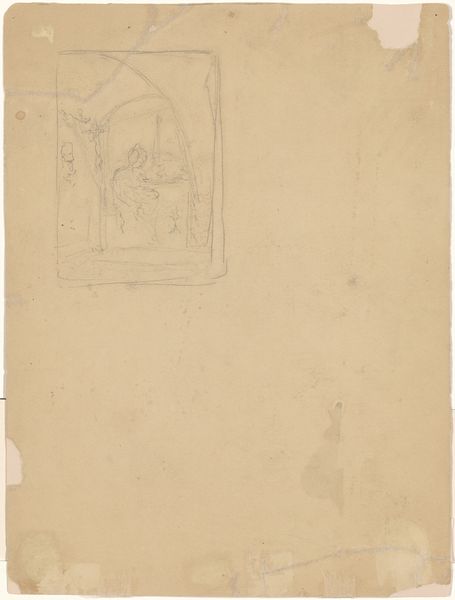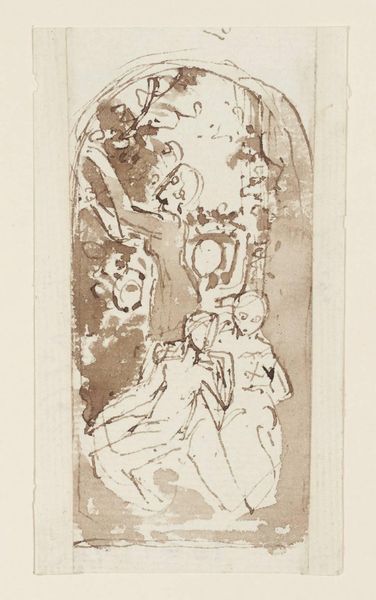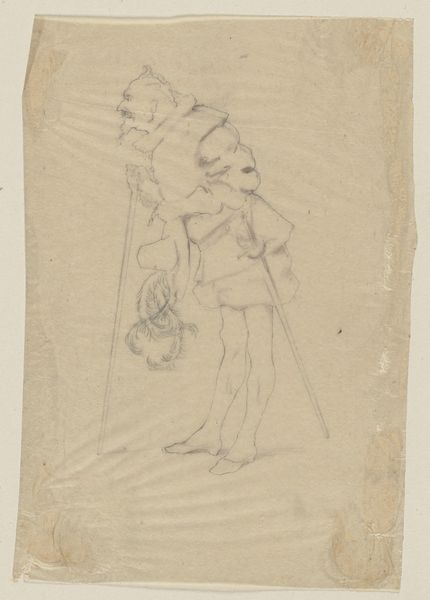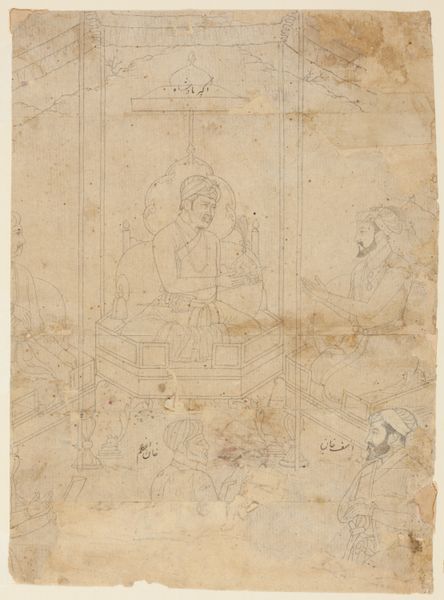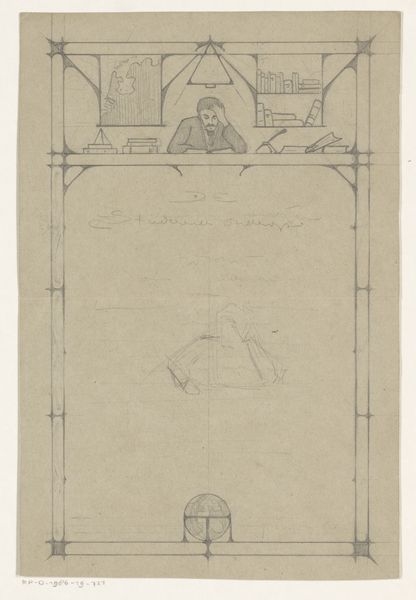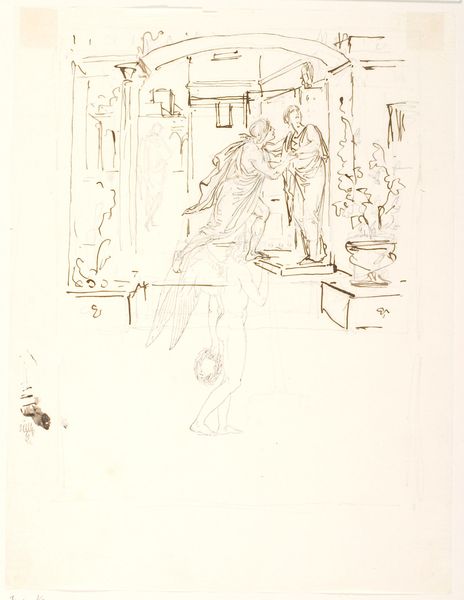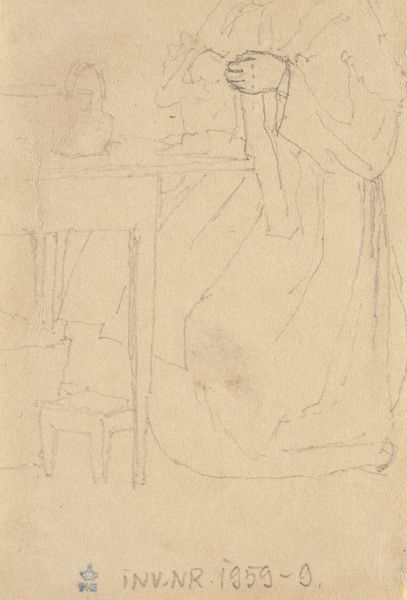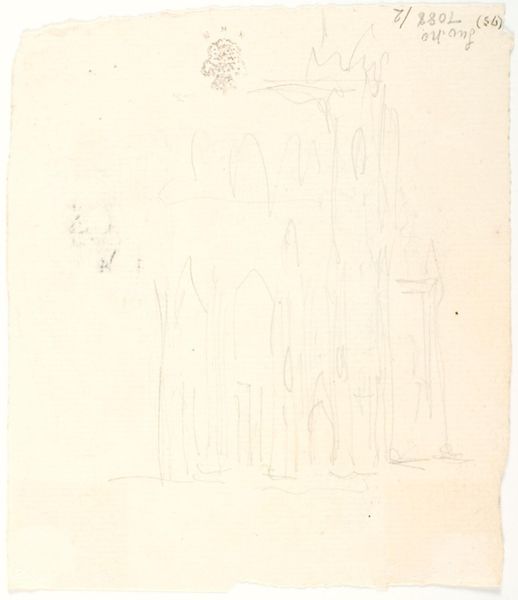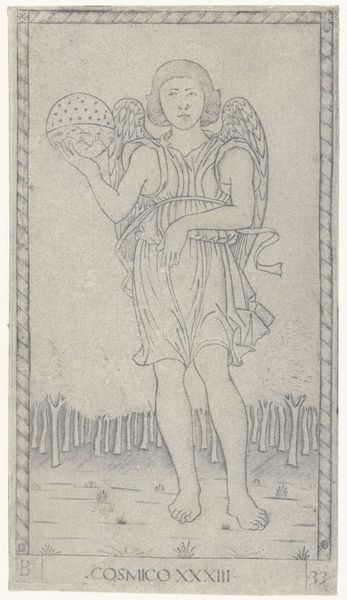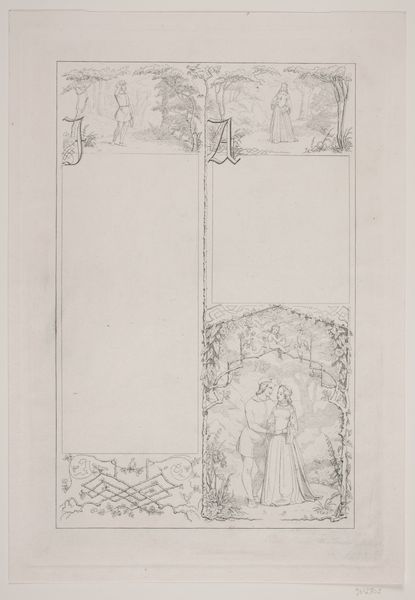
drawing, paper, pencil
#
drawing
#
amateur sketch
#
aged paper
#
toned paper
#
light pencil work
#
quirky sketch
#
sketch book
#
incomplete sketchy
#
landscape
#
paper
#
personal sketchbook
#
pencil
#
sketchbook drawing
#
genre-painting
#
sketchbook art
Dimensions: height 365 mm, width 275 mm, height 305 mm, width 190 mm
Copyright: Rijks Museum: Open Domain
Editor: This is "Standing Woman Caring for her Plants," a pencil drawing on paper by Ferdinand Roybet, dating somewhere between 1850 and 1920. The composition feels so open and airy because the pencilwork is sparse, yet the grid provides a clear underlying structure. What strikes you about its visual arrangement? Curator: The visible grid certainly presents an intriguing formal element. Notice how the artist uses this structure, almost like scaffolding, to create spatial relationships. The figure of the woman, the objects, and the implied landscape behind her are all mediated through this geometric framework. Editor: Yes, the grid really jumps out. It seems so deliberate, not something hidden or erased. Is it typical to see the underlying structure so clearly in a finished drawing? Curator: It's unusual but provides a unique point of access. It prompts questions about the creative process. Does the visible structure disrupt or enhance our reading of the drawing's subject? Consider the relationships the artist creates, as much linear as figurative. What impact does this have on your reading? Editor: It’s like you’re seeing both the finished image and the artist’s working method all at once. It does kind of make you question whether the image is ‘finished’ in the conventional sense of the word, though. The transparency makes it all the more interesting to examine! Curator: Indeed. And what can we discern about the relationship between figure and ground here, observing how the woman and objects sit within their delineated setting? Consider, too, how the tonal range of this sketch serves to further this dialogue. Editor: I can see the way he uses the light pencil lines to create that contrast and bring forth elements he wishes to stand out. This has been really helpful in observing new artistic approaches, and I appreciate you taking the time! Curator: My pleasure! Examining art is nothing if not seeing it with intention, and constantly questioning.
Comments
No comments
Be the first to comment and join the conversation on the ultimate creative platform.
